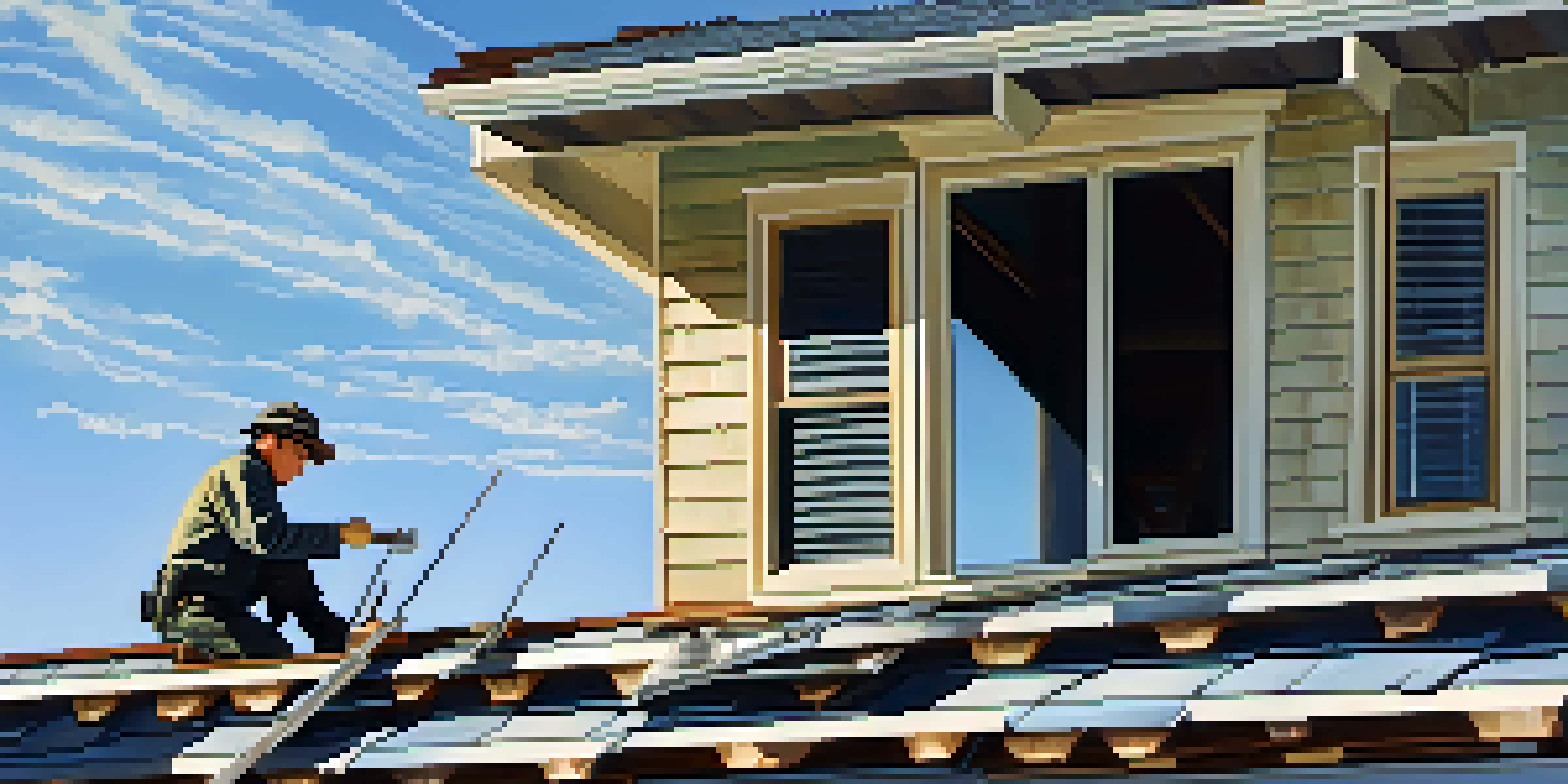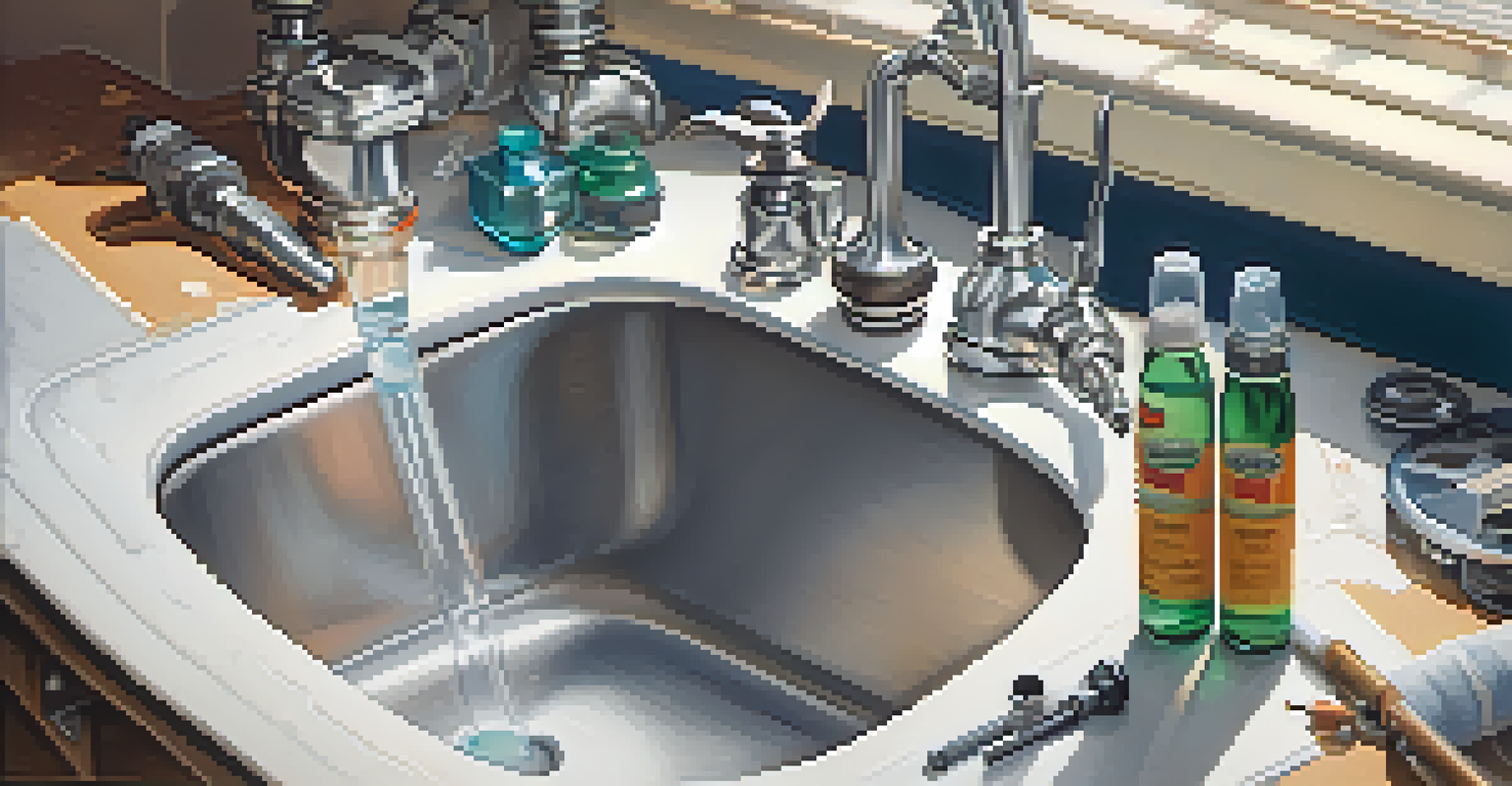Common Issues Found During Property Inspections Explained

Understanding the Importance of Property Inspections
Property inspections are a critical step in the buying or selling process. They help uncover hidden issues that could lead to costly repairs down the line. By identifying these problems early, both buyers and sellers can make informed decisions.
An ounce of prevention is worth a pound of cure.
Think of a property inspection like a health check-up for your home. Just as we go for regular check-ups to catch potential health issues, a property inspection reveals underlying problems that may not be visible to the naked eye.
Ultimately, a thorough inspection can save you money and stress, making it a vital part of any real estate transaction.
Roofing Problems: Leaks and Structural Damage
One of the most common issues found during property inspections is roofing problems, such as leaks or structural damage. A compromised roof can lead to serious water damage inside the home, which may not be apparent until it's too late.

Imagine your roof as the umbrella of your house; if there are holes or tears, rainwater can seep in, causing havoc. Inspectors often assess the condition of shingles, flashing, and gutters to identify potential issues.
Property Inspections Are Essential
They uncover hidden issues that can lead to costly repairs, allowing buyers and sellers to make informed decisions.
Addressing roofing problems promptly can save homeowners from extensive repairs and protect the overall integrity of the house.
Electrical Issues: Outdated Wiring and Safety Hazards
Electrical problems are another frequent find during inspections, often stemming from outdated wiring or unsafe installations. These issues pose not only a risk of electrical failure but also a potential fire hazard.
The bitterness of poor quality remains long after the sweetness of low price is forgotten.
Consider this: an old, frayed wire can lead to a fire just like a small spark can ignite a dry leaf. Inspectors look for signs of wear, overloaded circuits, and proper grounding to assess electrical safety.
Addressing electrical issues is crucial for ensuring the safety and functionality of a home, making it a top priority during inspections.
Plumbing Problems: Leaks and Drainage Issues
Plumbing problems, such as leaks and drainage issues, are also common during property inspections. These can lead to water damage, mold growth, and even structural issues if not addressed promptly.
Think of your plumbing system like the veins in your body; if there's a leak, it can cause significant damage over time. Inspectors assess pipes, fixtures, and drainage systems to identify potential concerns.
Common Issues Found in Inspections
Problems like roofing leaks, electrical hazards, plumbing issues, and foundation cracks can significantly impact a property's safety and value.
Timely repairs to plumbing issues can prevent costly damage and ensure a healthy living environment.
HVAC Concerns: Inefficiency and Maintenance Needs
Heating, ventilation, and air conditioning (HVAC) systems often show signs of inefficiency or inadequate maintenance during inspections. A poorly functioning HVAC system can lead to uncomfortable living conditions and higher energy bills.
Picture your HVAC as the lungs of your home; if they’re not working properly, the air quality and comfort level drop dramatically. Inspectors evaluate the age, condition, and efficiency of these systems to identify needed repairs or replacements.
Addressing HVAC concerns can improve comfort levels and reduce energy costs, making it an essential aspect of property inspections.
Foundation Issues: Cracks and Settling
Foundation issues, such as cracks or settling, are critical problems that can significantly affect a property's stability. A compromised foundation can lead to a host of other issues, including uneven floors and doors that won't close properly.
Think of your home’s foundation as the roots of a tree; if they’re weak, the entire structure is at risk. Inspectors look for visible cracks, uneven surfaces, and other signs of foundation distress to assess the situation.
Address Findings for Home Safety
Proactively addressing inspection findings enhances property value and ensures a safe, functional living environment.
Addressing foundation problems early on is essential for maintaining the safety and value of a property.
Pest Infestations: Signs of Damage and Prevention
Pest infestations, such as termites or rodents, are another common concern during property inspections. These nuisances can cause significant damage to a home and often go unnoticed until it's too late.
Imagine a tiny termite as a silent destroyer, munching away at the wooden structures in your home. Inspectors look for signs of pest damage, droppings, and entry points to help identify potential infestations.

Preventative measures and timely treatments can safeguard a property from pest-related damage, making it an important focus during inspections.
The Importance of Addressing Inspection Findings
After a property inspection, addressing the findings is crucial for ensuring a safe and functional home. Whether it involves minor repairs or major renovations, tackling these issues can save homeowners from future headaches.
Consider the inspection report as a roadmap; it highlights areas that need attention and guides homeowners on where to focus their efforts. Ignoring these findings can lead to escalated problems and costs over time.
By proactively addressing inspection findings, homeowners can enhance their property’s value and enjoy peace of mind knowing their home is in good shape.